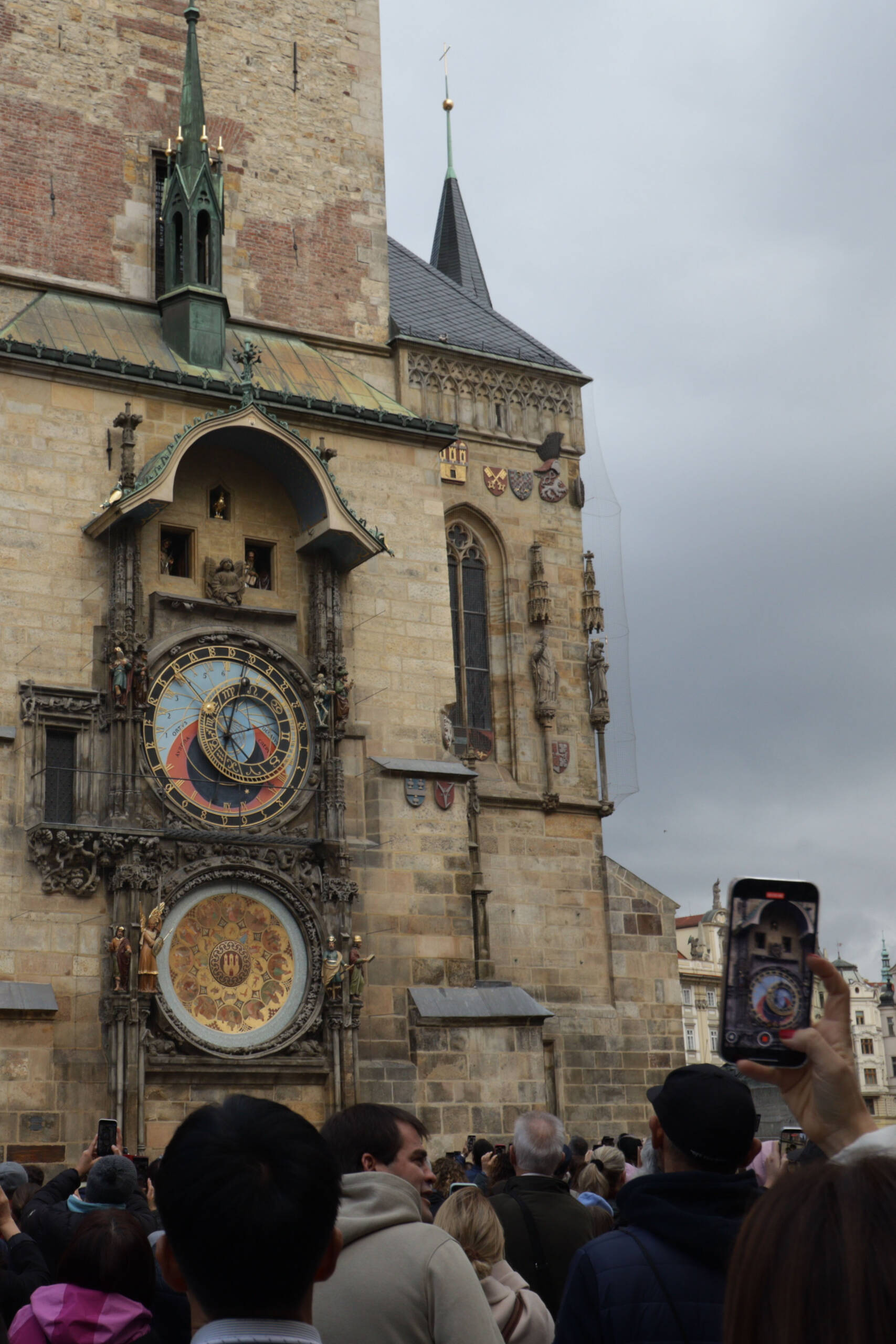Every traveler who comes to Prague eventually ends up here—pressed among hundreds of others in Old Town Square, necks craned and phones raised, waiting for that oddly mesmerizing moment when the Astronomical Clock performs its little mechanical theater. The clock, mounted on the southern wall of the Old Town Hall, dates back to 1410 and is one of the oldest still-functioning astronomical clocks in the world. Its face is a marvel of medieval engineering—a tangle of gold, blue, and black geometry that tracks not just the time, but the position of the sun and moon, the zodiac, and the ancient Czech concept of time measured by Old Bohemian hours.

The image captures that electric crowd just seconds before the clock’s show begins. You can feel the anticipation in the raised phones, the little murmurs, the quiet reverence tourists afford this medieval contraption. The upper window, from which the Apostles appear on the hour, sits under a small gothic canopy, while Death—represented as a skeleton—rings his bell, reminding everyone that time is, in fact, limited. Below, a calendar dial painted by Josef Mánes in the 19th century shows the months and the coats of arms of the Old Town. The structure itself—stone, copper, and shadow—feels both eternal and fragile, like something that shouldn’t still be ticking yet refuses to stop.
Photographically, it’s a must-have shot, though every visitor’s image looks slightly different depending on the sky. Here, the light is diffused under a gray Bohemian overcast, which actually brings out the patina of the copper spire and the texture of the sandstone façade. The darker clouds hovering behind the church tower frame the clock perfectly, emphasizing the contrast between its mechanical elegance and the rough Gothic mass of the Old Town Hall. There’s something slightly poetic about that—the contrast between celestial order and human chaos, all gathered in one square, under one clock.
Anyone who says they’ve been to Prague but hasn’t stood in this crowd, watching the twelve Apostles make their slow, solemn march, hasn’t really felt the city breathe. The Astronomical Clock isn’t just a tourist stop; it’s Prague’s beating heart, keeping time for six centuries and counting.
Leave a Reply